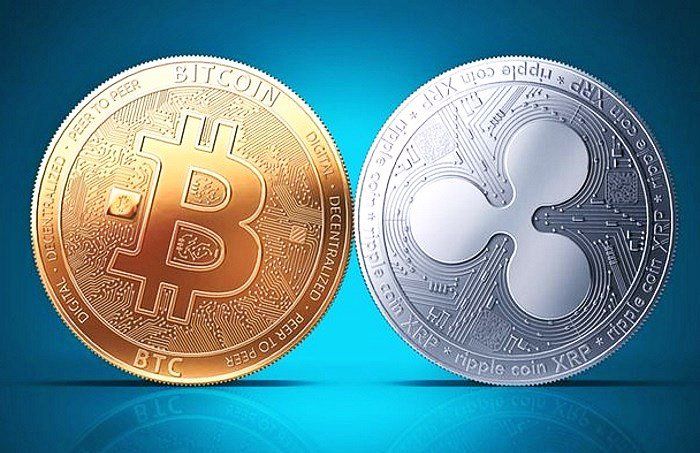 Bitcoin
Bitcoin
Cash is a medium of commerce that we all agree to follow whenever it refers to transactions. As something of an operating device, cash provides a basic way to describe and convey significance. Every sort of financial played a high gearing in the payment systems over the relevant period. In this respect, the emergence of bitcoin has reshaped the international payment market to an unimaginable extent just a few years ago. Cryptocurrency is simulated money that uses cryptography for encrypted data.
Bitcoin trading is just how you guess on crypto price volatility. Though that has traditionally meant buying bitcoin on an exchange like Independent Reserve at an event, anticipating the price to rise significantly, cryptocurrency investors are now using futures to gamble on both increasing and falling prices – optimizing bitcoin volatility. If you find bitcoin trading interesting, you must check out Trading App.
Ripple
Ripple is one type of cryptocurrency in the graph. Ripple is a corporation, an electronic online payment program, and a cryptocurrency, sometimes recognized as XRP. Ripple corresponds to a wholly-owned corporation involved in creating the XRP cryptocurrency and the RippleNet platform. It should be remembered as Ripple is indeed a blockchain network and a money settling network. Ripple’s technology is built to render transfers faster and more practical for banks, making it a more common cryptocurrency solution for more significant financial firms.
How Bitcoin Works?
Every bitcoin is simply a computer file saved on a phone or pc in the online wallet service. People can submit bitcoins in their digital wallets and can deliver bitcoins to others. Each payment is registered in a public database known as the blockchain. It makes it easy to map the past of Bitcoins to discourage individuals from wasting coins they don’t buy, creating clones, or unraveling payments.
How does Ripple work?
Ripple is mainly described for its online payment application rather than its cryptocurrency XRP. Ripple runs on an open-source, P2P, shared network that enables for a smooth exchange of funds in any manner. To explain how the scheme operates, imagine a money transfer arrangement where the two sides use their chosen middlemen to collect the money at each end of the exchange.
Bitcoin/Ripple
Bitcoin runs on a decentralized blockchain network that funds the digital money used to make purchases for products or services more accessible. Bitcoin, the system, is mainly famous for the blockchain bitcoin. The Bitcoin network is built on the blockchain’s philosophy, the decentralized database of validated transfers and track. Miners check activities continuously and link those to the bitcoin blockchain, which acts as the basis for all system operations. In return for their effort and the processing resources used to verify the transaction in this manner, the miners are awarded BTC for having successfully validated several trades.
XRP is a platform primarily recognized for its online payments system and application. But apart from XRP cryptocurrency, Ripple is best regarded as the money arbitration, capital swap, and export mechanism utilized by a consortium of customers and monetary third parties.
Primary Variations
-
Utilizing
Bitcoin is used in cash capacity. Ripple aims to use particular resources or transfers of goods such as fuel or jewelry across the web.
The Ripple protocol is an entirely distributed money transfer, while the Bitcoin network involves centralized currency exchanges. This suggests that users are meant to trade XRP for USD; it is feasible to do so inside the Ripple network with no intermediary or external parties.
But if anyone tries to offer their XRP for USD, they do it on the platform without adding a third source.
-
Rate of Exchange
In particular, Ripple provides swift and inexpensive transfers, enabling affordable prices, high-speed currency trades, money deposits, and capital flows. Bitcoin acts as a digital currency asset – instead of exchange rates, Bitcoin relies more on its opposition to repression and centralization.
The XRP payments are processed in seconds. But at the other end, the authentication of the Bitcoin exchanges requires a few minutes.
-
Technologies
The bitcoin network depends on blockchain technologies – a decentralized distributed ledger that contains all verified transactions and a mining principle that validates transactions. Ripple utilizes a Consensus Ledger coupled with a system of validation providers or verifiers. This validator is checked and selected by Ripple and is the core of the payment testing stage.
Usage
The leading roles of Ripple are currency trade, capital flows, and foreign transactions. Ripple provides a lot quicker, easier, and trouble-free alternative to swap currency and transfer money around boundaries.
Bitcoin is primarily an asset that requires no third party with no central government regulating its production and consumption. It could be used for various reasons, varying from spending for grooming to hotel reservations digitally.
Conclusion
Although Ripple operates a little more complex, the Ripple method scores higher than that of the Bitcoin system with its lower loading time and reduced transaction costs. On the other side, BTC is commonly more common and better established than XRP, offering it a distinct benefit.
Bitcoin stays an utterly public system and is controlled by no one person, authority or government. The Ripple network, while autonomous, is managed and run by a private corporation by the same name. About the fact that all provide unique blockchain keys, the two common virtual platforms cater for various purposes.

Founder Dinis Guarda
IntelligentHQ Your New Business Network.
IntelligentHQ is a Business network and an expert source for finance, capital markets and intelligence for thousands of global business professionals, startups, and companies.
We exist at the point of intersection between technology, social media, finance and innovation.
IntelligentHQ leverages innovation and scale of social digital technology, analytics, news, and distribution to create an unparalleled, full digital medium and social business networks spectrum.
IntelligentHQ is working hard, to become a trusted, and indispensable source of business news and analytics, within financial services and its associated supply chains and ecosystems


 Bitcoin
Bitcoin









